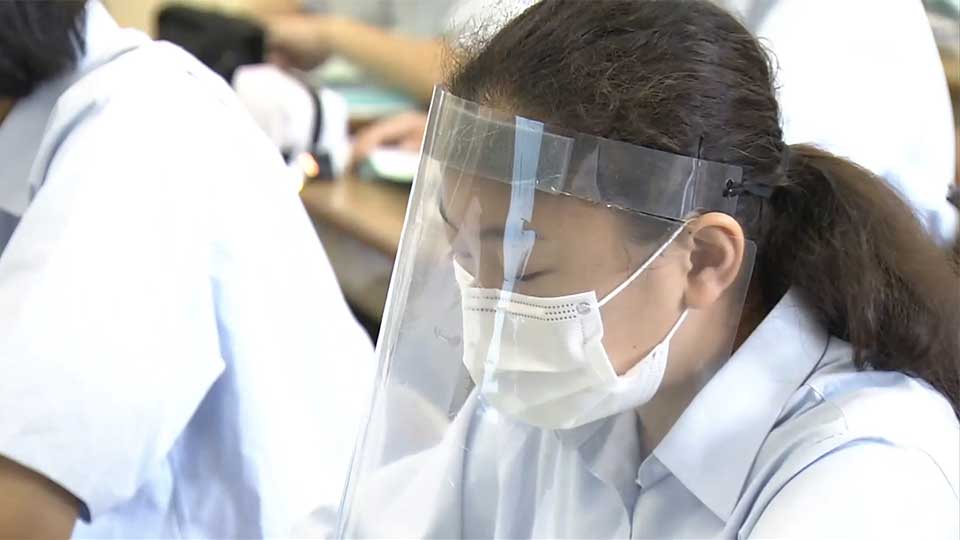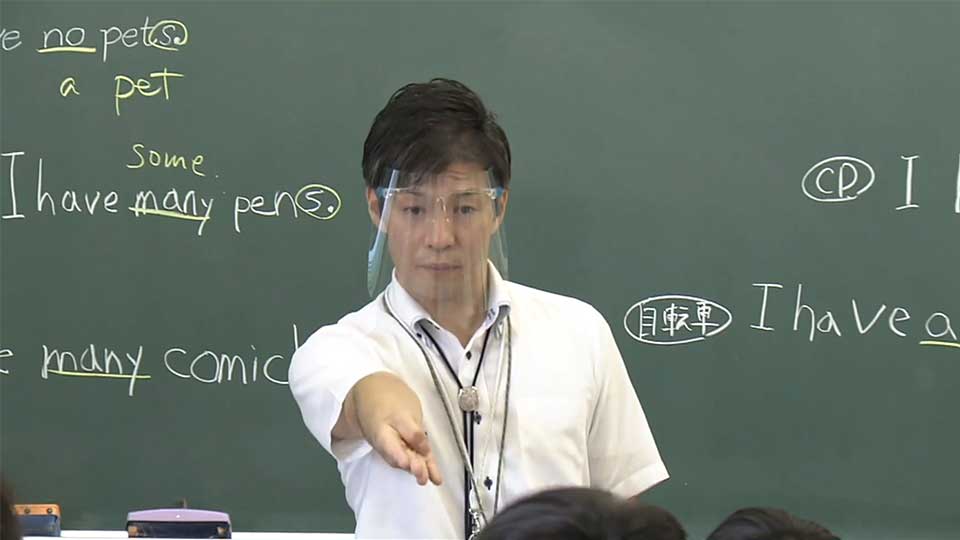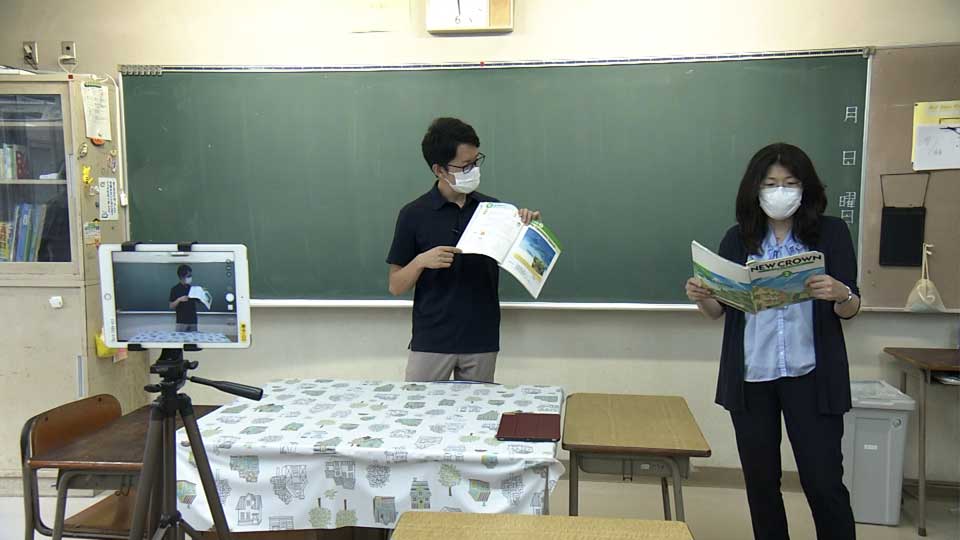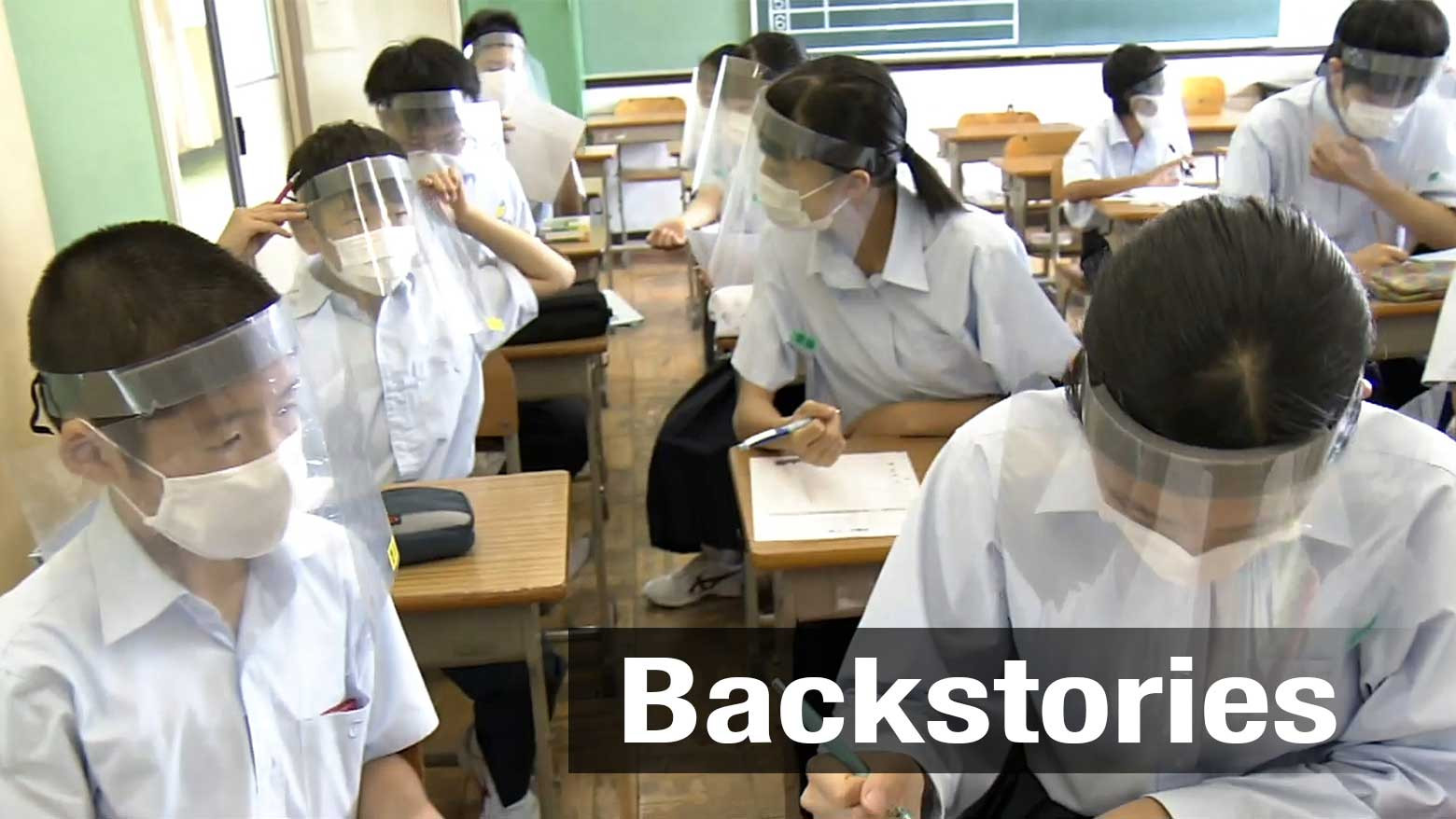Face shields
"Please wear your face shields," says Kawano Mitsushi, an English teacher at Tateishi Junior High School in Tokyo's Katsushika Ward. It is one of the ways he is trying to limit the risk of infection in his classroom. His students are not allowed to sit face-to-face or work in groups. And when they want to speak up or talk to someone, they have to put on a face shield.
Kawano thought the shields, which are made by parents and distributed throughout the school, would enable students to speak in the classroom without wearing face masks. He says masks muffle sound and cover the mouth, which makes it difficult for him to evaluate pronunciation. But almost all of his students have opted to wear the shields along with their masks. Kawano says only one student feels safe enough in the classroom to swap a mask for a shield.

"It's understandable," says Kawano.
"I'm worried about infection, so I wear both," says one student. She says she does this despite the fact that it makes her uncomfortably hot. She adds that the shield often fogs up, making it difficult to see.
"Speaking is essential to learning a language," she says. "We need to speak but we also need to prevent infection. I feel protected wearing both."
Kawano says dealing with these concerns poses a unique challenge.
"I feel like I'm juggling two things, education and infection prevention, that are almost impossible to deal with at the same time," he says. "Avoiding face to face communication and group work largely disrupts the fundamentals of language learning. I'll do my best to find out what works, but my options are limited."

Social distancing
Kawano's school reopened on June 1, and implemented a staggered attendance system before returning to regular hours on June 22. Vice Principal Yutsudo Yukari says students are now required to wear masks at all times, but can switch to shields during music and English classes. She says the school has also put in place physical distancing measures that are harder to implement.
"We're trying to provide as safe a learning environment as possible for students, but when it comes to social distancing, the size of the classrooms makes it difficult," says Yutsudo.
Digital tools
Some public schools have turned to digital tools to minimize the risk of infection. In an English class at Higashi Junior High School in Hadano, Kanagawa Prefecture, students are allowed to leave the classroom to work on their pronunciation, using iPads to record their voices. This allows them to speak up without worrying about transmission in a way they could not around their classmates.
(Watch video: 03:45)
Sato Akihito, the school English teacher, says the tool allows him to check his students' pronunciation carefully and provide more thorough feedback.
"Complaining about what we can't do right now does not help," he says. "Instead we should be thinking about what we can do."
Sato is also using videos to further reduce the risk of infection by limiting the amount of time he speaks in front of the class. He and his colleagues started producing video lessons in mid-May, while the school was closed. They decided to continue making the videos after the school was reopened, as it offered a way to minimize the risk of infection while also providing a way for students to review at home. The school now has its own YouTube channel with more than 60 videos.

The way in which schools are able to adapt their teaching methods is proving crucial for the current generation of students. Torikai Kumiko, professor emeritus at Rikkyo University, hopes some of the innovations will help shape the future of the country's public school system.
"In the time of the coronavirus, the methods teachers have long relied upon have proven to be ineffective," she says. "They've become physically impossible. The pandemic has given teachers a chance to think about how to help students learn. They are being forced to think outside of the box, and I think this is a great opportunity to create a new style of education."

